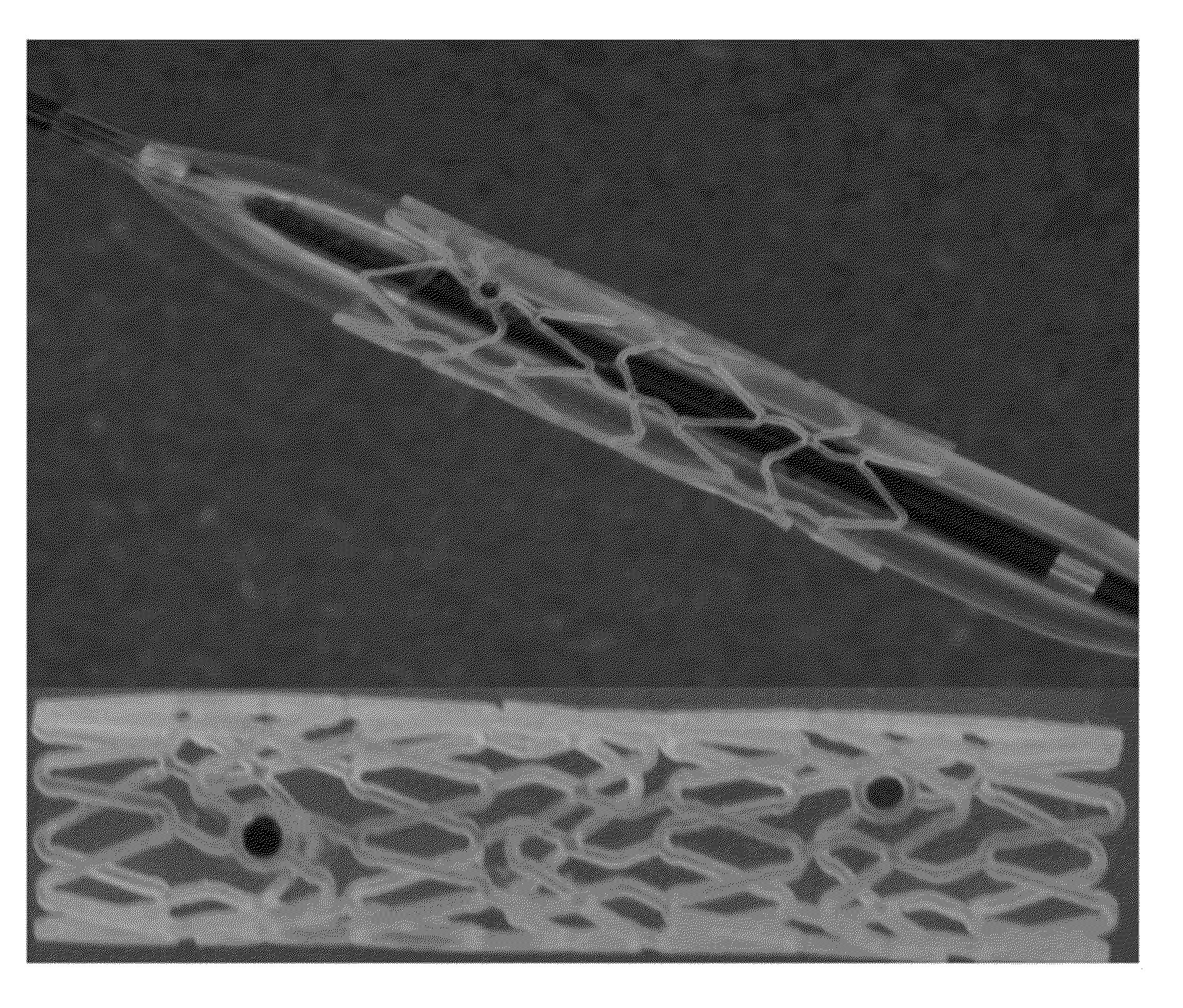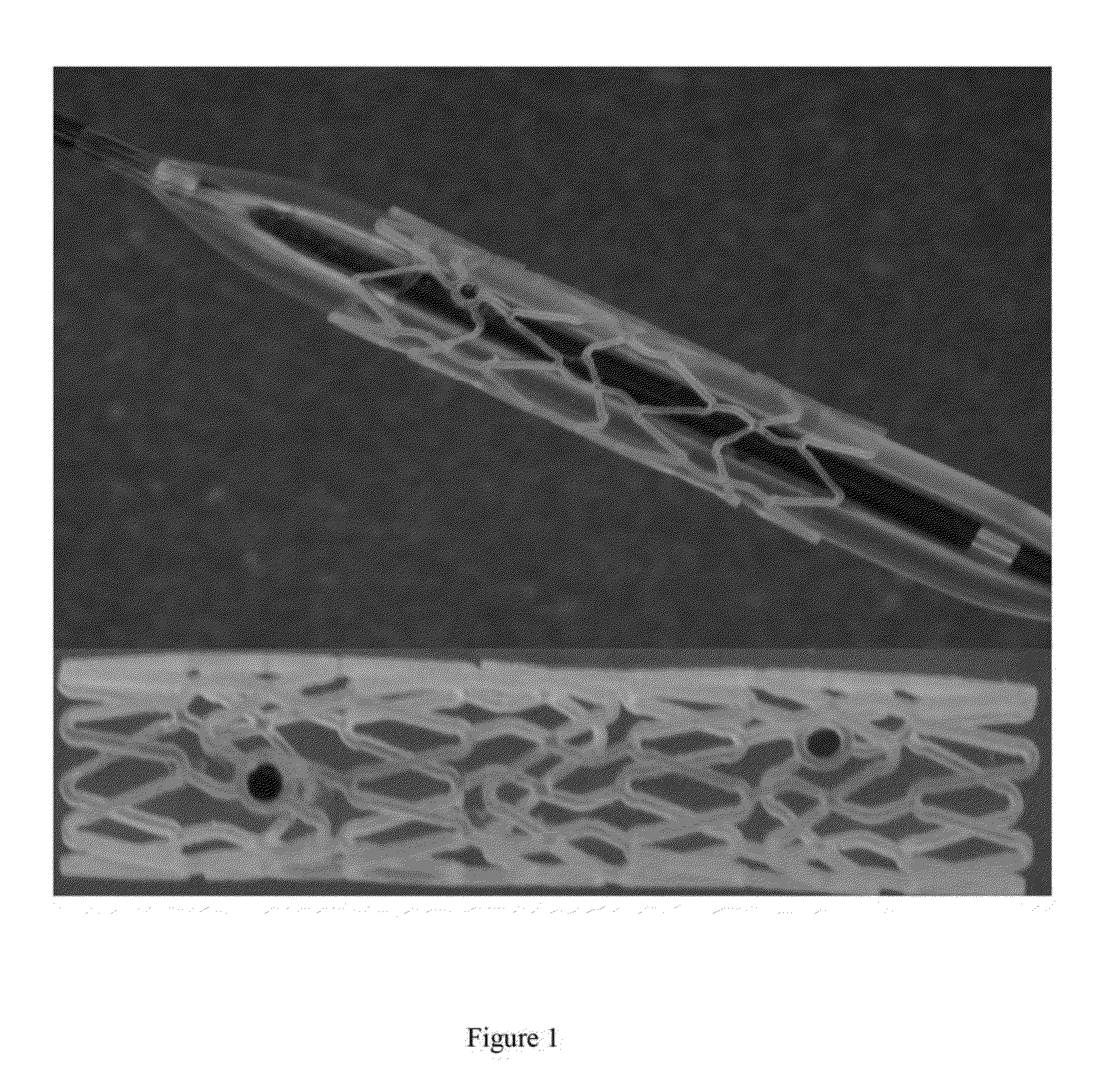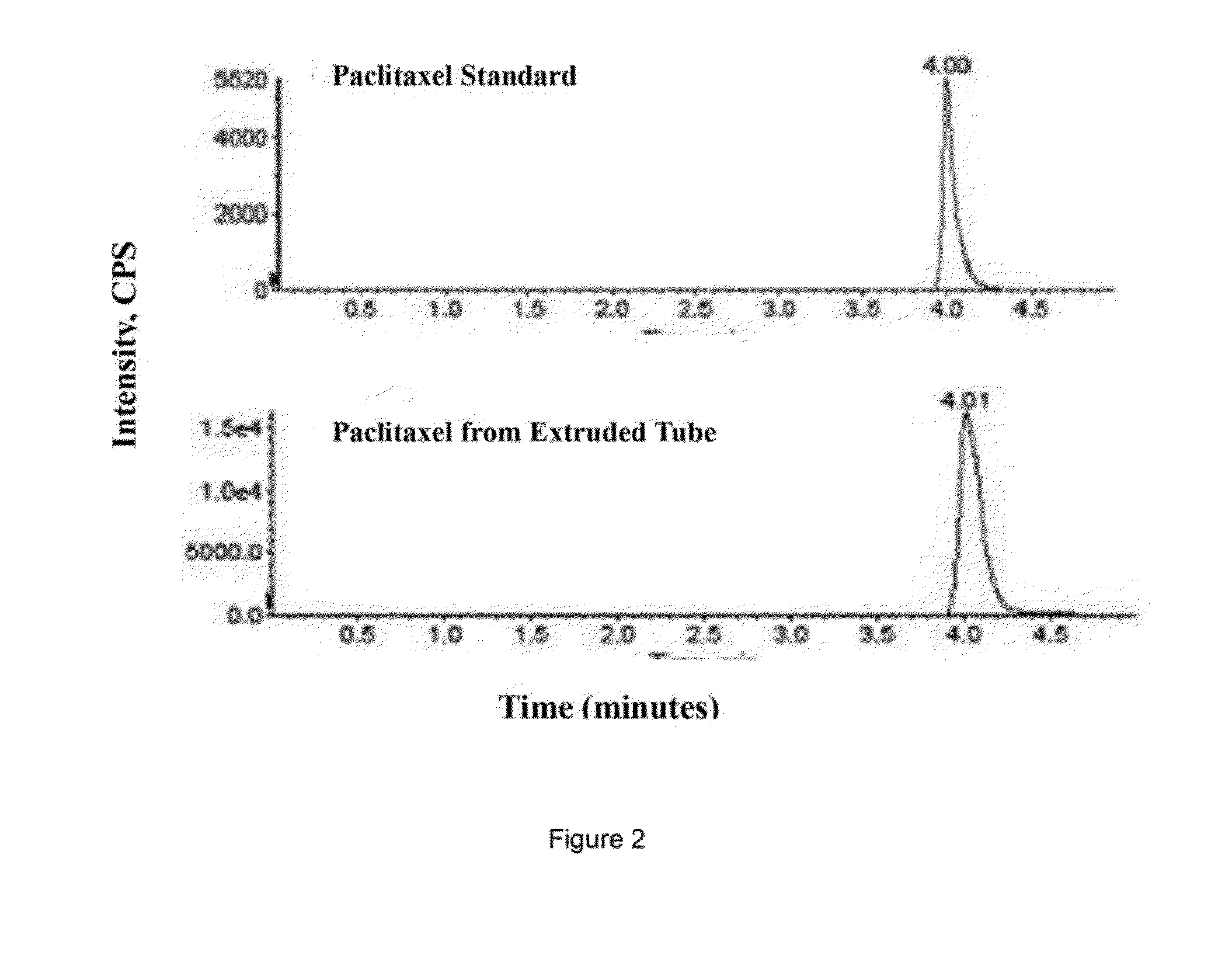Drug-impregnated biodegradable stent and methods of making the same
a biodegradable stent and drug-impregnated technology, applied in the field of biodegradable drug-eluting stents, can solve the problems of metal artifacts remaining in the vessel, the direct cost of these life-saving procedures is over $2 billion annually, and the need for expensive, long-term anti-platelet therapy. , to achieve the effect of reducing the risk of recurrence, and reducing the risk of recurr
- Summary
- Abstract
- Description
- Claims
- Application Information
AI Technical Summary
Problems solved by technology
Method used
Image
Examples
example 1
Biodegradable Polyester Polymer (PLLA) and Paclitaxel Crystalline
[0123]PLLA (melting point 150-180 degree C.) with pellet size of approximately 2 mm were first grinded down to less than 500 um with a dry mill and then further grinded down to less than 100 nm using a jet mill. The drug paclitaxel powder were grinded directly in to less than 100 nm using a jet mill. The polymer and drug were mixed in the ratio of 98:2 (by weight) using a speeding mixer at the speed of over 2000 RPM.
examples 2
Paclitaxel-Impregnated Biodegradable Tube Extrusion
[0124]200 g of premixed paclitaxel-polymeric composition prepared in example 1 were dried overnight at 45 degree C. The extrusion temperature was set at 160 degree C. with the screw speed of 20 RPM. The extruded paclitaxel-impregnated biodegradable tubes have outside diameter of 1.8 mm, wall thickness of 150 um. The final tube contains, by weight, two percent paclitaxel in at least a portion of crystalline structure. Paclitaxel was evenly dispersed inside the biodegradable polymer.
examples 3
Polymer and Drug Molecular Orientation
[0125]The paclitaxel-impregnated tube formed in the example 2 was further deformed using a blow molding technique. In the study the tube was put through a metal mold with an inside diameter of 3.0 mm and pressurized with air at 10 PSI. Heat the metal mold to 60 degrees (10 degree above PLLA's glass transition temperature), hold the tube inside the mold for 30 seconds and then cool the tube quickly to room temperature. Both the drug and polymer's molecules were orientated in both radial and axial direction.
PUM
| Property | Measurement | Unit |
|---|---|---|
| thicknesses | aaaaa | aaaaa |
| diameter | aaaaa | aaaaa |
| sizes | aaaaa | aaaaa |
Abstract
Description
Claims
Application Information
 Login to view more
Login to view more - R&D Engineer
- R&D Manager
- IP Professional
- Industry Leading Data Capabilities
- Powerful AI technology
- Patent DNA Extraction
Browse by: Latest US Patents, China's latest patents, Technical Efficacy Thesaurus, Application Domain, Technology Topic.
© 2024 PatSnap. All rights reserved.Legal|Privacy policy|Modern Slavery Act Transparency Statement|Sitemap



